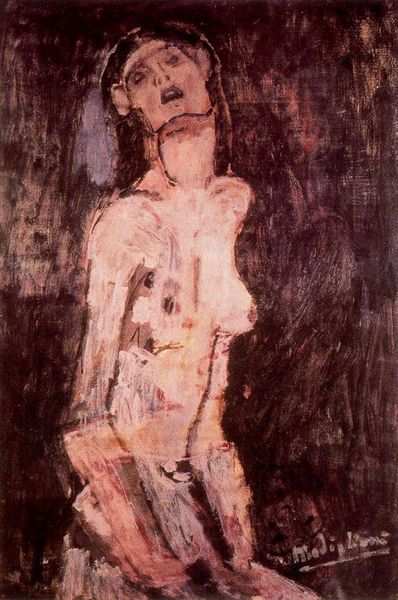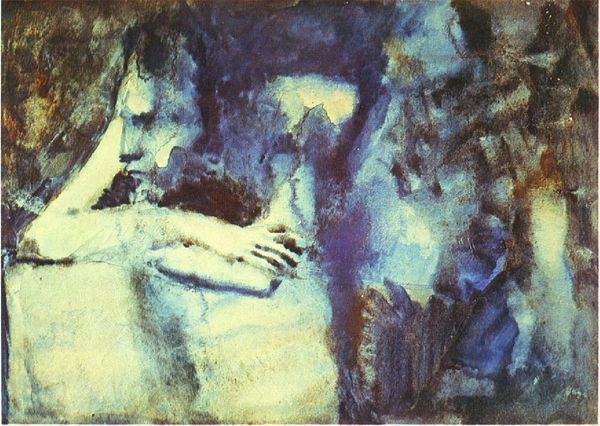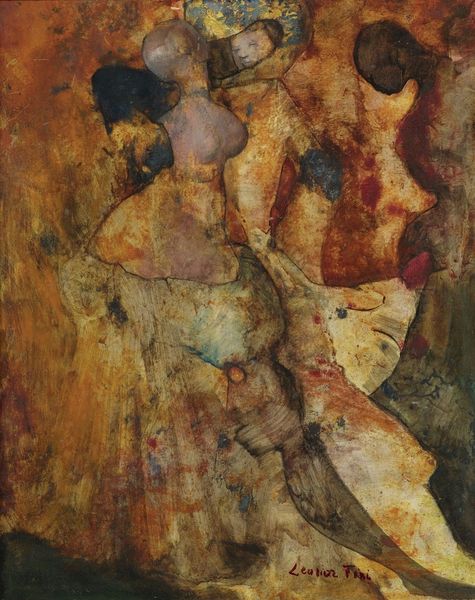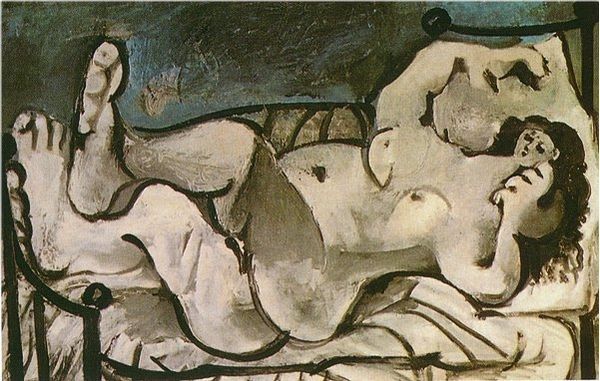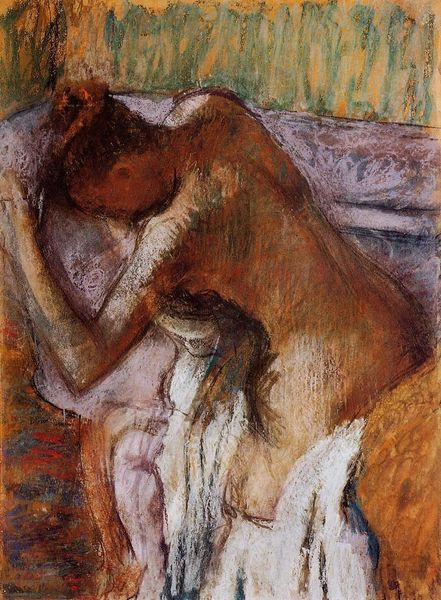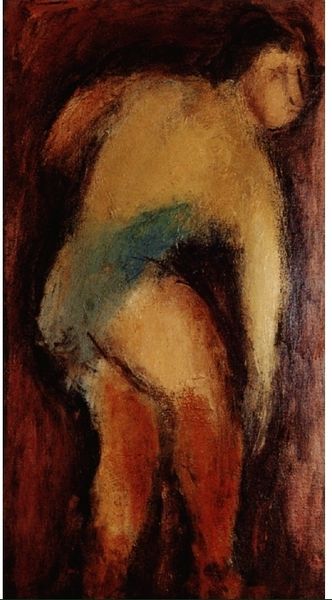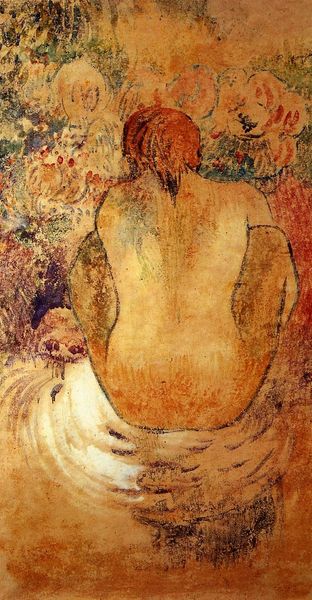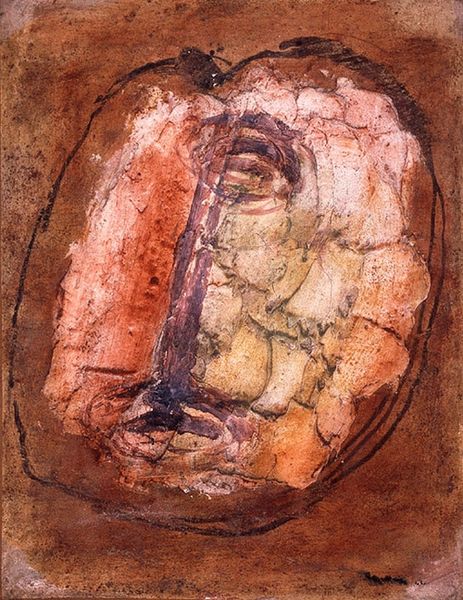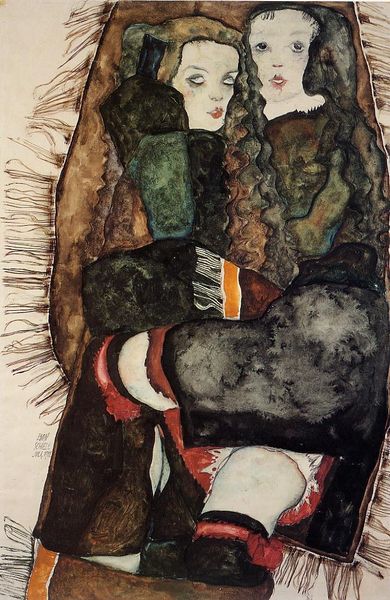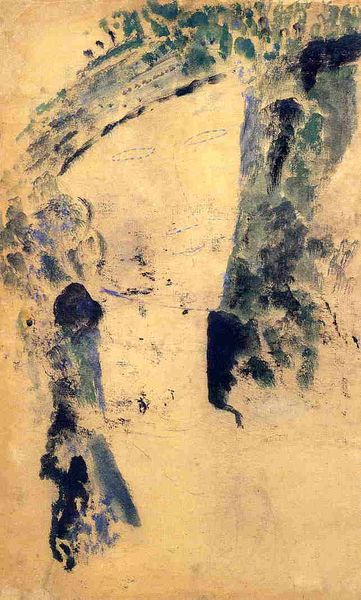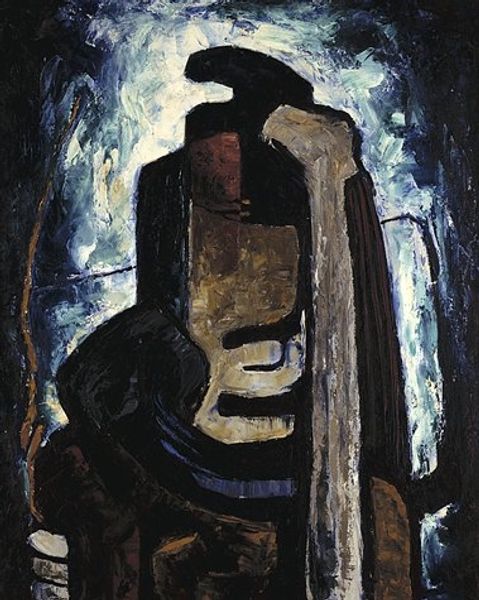
painting, oil-paint, impasto
#
portrait
#
cubism
#
painting
#
oil-paint
#
figuration
#
oil painting
#
impasto
#
intimism
#
nude
#
early-renaissance
#
modernism
Dimensions: 46 x 38.5 cm
Copyright: Public domain US
Editor: Here we have Picasso's "Blue Nude," painted in 1902. The stark blue palette and huddled figure create such a palpable sense of melancholy. How do you interpret this work, particularly within its historical context? Curator: Well, the "Blue Period," and this painting specifically, is crucial for understanding the socio-political anxieties of early 20th-century Europe. Beyond personal sorrow, the color blue held symbolic weight; think of the "Blue Rider" group formed a decade later. But also consider the growing visibility of poverty in rapidly industrializing cities. Could this nude be a commentary on social alienation, stripped bare by circumstance, not just aesthetically? Editor: That’s a really interesting way to consider the blue – beyond just the artist's emotions, you're suggesting a broader societal reflection? Does the figure's obscured face play into this idea of alienation? Curator: Exactly! The averted gaze invites the viewer to project their own understanding of marginalization onto the figure. Think about the Salon system, and the rigid academic standards of the time. What does it mean to present such a figure in a space dedicated to celebrating beauty and idealized forms? Is Picasso subtly critiquing the institutions of art themselves by highlighting subjects they typically ignore? Editor: So, the painting is not just a representation, but also an intervention into the art world? Curator: Precisely. It asks us to question what we value and who we choose to represent. It suggests that the role of art can and perhaps *should* be to give visibility to the invisible. Editor: I see it now. Thanks! I came in thinking of a mood piece, and I’m leaving thinking about a piece of social commentary. Curator: And that shift is exactly why studying art history is so rewarding. It helps us connect the dots between the artist, the artwork, and the world around us.
Comments
No comments
Be the first to comment and join the conversation on the ultimate creative platform.
